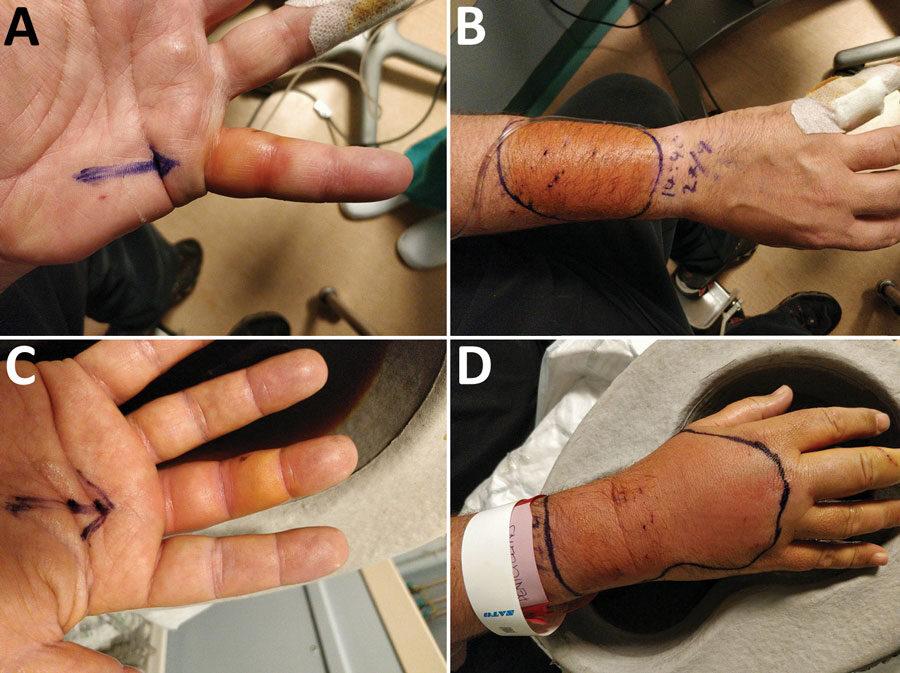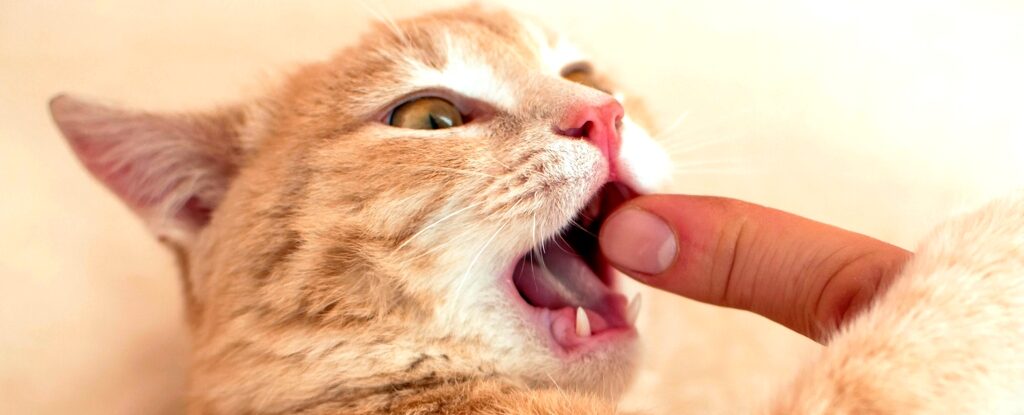In the United Kingdom, a 48-year-old who was bit by a stray feline ended up contracting a species of bacterium that scientists have never seen before.
His immune response to the foreign microorganism was a doozy. Just eight hours after receiving multiple bites, the man's hands had swollen to such a great extent that he took himself to the emergency department.
His puncture wounds were cleaned and dressed and he was given a tetanus shot before being sent on his way with antibiotics.
A day later, he was back at the hospital. His pinky and middle fingers on his left hand were painfully enlarged and both his forearms were red and swollen.
Doctors had to surgically remove the damaged tissue around his wounds. He was also given three different antibiotics intravenously and was sent home with oral antibiotics.
This time, thankfully, the treatment worked and he made a full recovery.

Streptococcus is a genus of gram-positive bacteria that is linked to meningitis, strep throat, bacterial pneumonia, and pink eye, among many other ailments.
But when researchers sequenced part of this bacterium's genome, it did not match any strains on record. This was a new germ that scientists had never formally documented.
As it turns out, the bacterium belongs to another genus of gram-positive bacteria called Globicatella.
Full genome sequencing of the bacterium suggests that it differs from other related strains, like G. sulfidfaciens, by around 20 percent, indicating a "distinct and previously undescribed species".
Because G. sulfidifaciens is resistant to several common types of antibiotics, it can prove difficult to eradicate from the body. Thankfully, the new strain discovered in the UK responded well to at least some antibiotics, but the story holds a warning for the public.
"This report highlights the role of cats as reservoirs of as yet undiscovered bacterial species that have human pathogenic potential," the authors of the case study write.
Cat bites and scratches that puncture the skin cause 66,000 visits to the emergency department every year in the United States. Many require antibiotics, or even surgery, to prevent serious infection.
Like all animals, including us, cats can harbor some seriously bad pathogens. The fact they also have pointy teeth and claws means they can stick them deep into your skin. And if the bite or scratch occurs on a joint, it can be hard to target.
So, experts say that if you are attacked by a stray cat, you should immediately wash the wound out gently with soap or salt and then see a doctor right away.
The case study was published in Emerging Infectious Diseases.




Comment: See also: